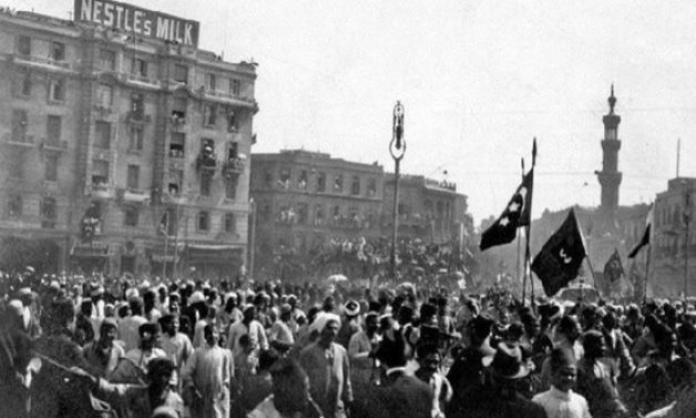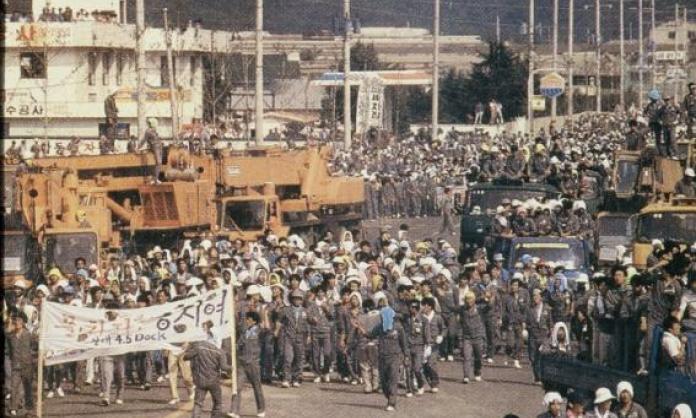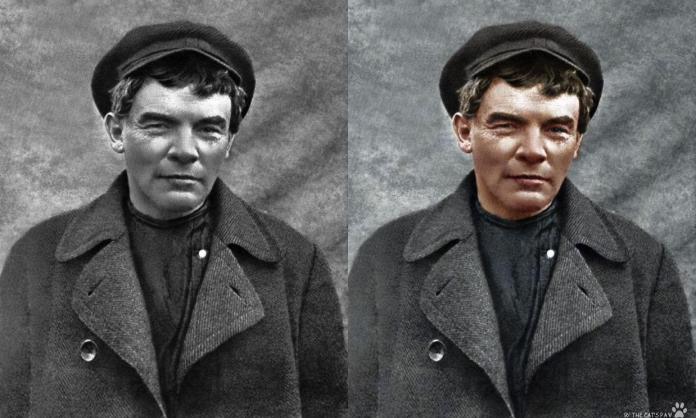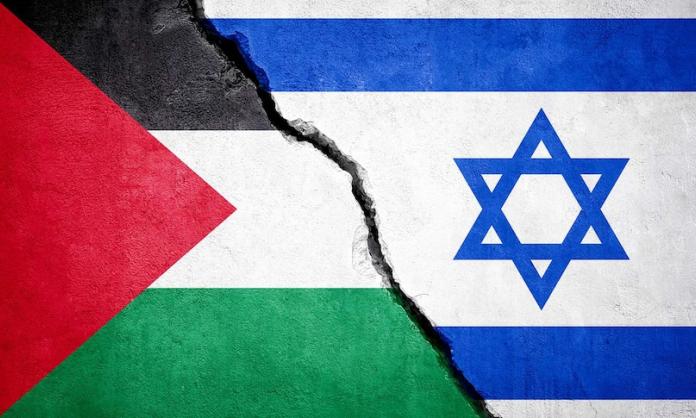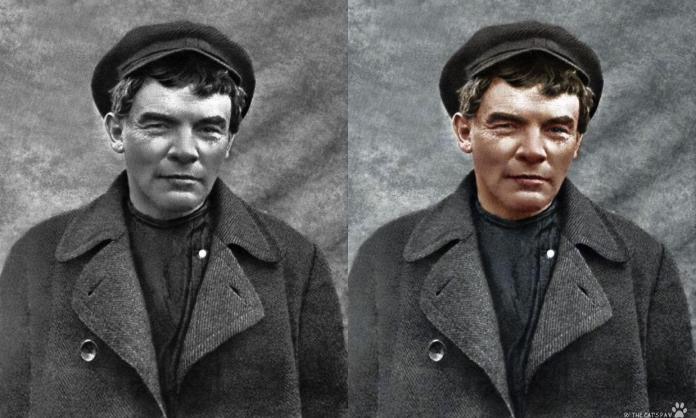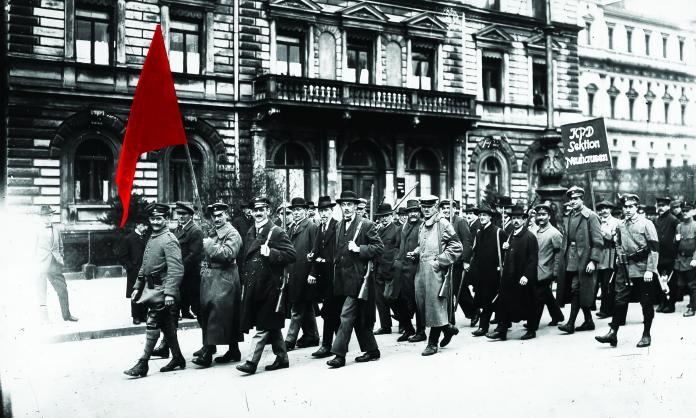In May-July 1979, the people of Nicaragua overthrew one of Latin America’s most hated dictatorships. It was the culmination of a guerrilla insurgency combined with urban insurrection. It cost tens of thousands of lives to win democracy.
The revolutionaries identified with the tradition of August Sandino, leader of an insurgency in the 1920s and early 1930s that fought the US Marines occupying Nicaragua. They maintained a mixed economy. It wasn’t communism, yet that didn’t save them from a murderous CIA-funded invasion in the 1980s.
As late as 1984, Sandinista National Liberation Front (FSLN) leader Daniel Ortega won a presidential poll with 67 percent of the vote. With the Sandinistas still defying the might of US imperialism, my comrade Janey Stone and I went to see the revolution for ourselves in 1985. We spent days tramping around the capital, Managua, to the provinces – and a long trip with the International Press Club to the front line of the contra war.
We met with FSLN cadres and political dissidents ranging from Trotskyists and Maoists through to the main legal conservative party. I asked Gerardo Alfaro, one of the conservative party leaders, what they would do if the US invaded. “We will take up arms”, he said.
One fellow I met in the street brightly informed me that the US was going to “start bombing us” on 3 July. I dismissed him as a crank until I saw the same story on the front page of a newspaper. They didn’t bomb, and we hoped we had made a tiny contribution to forestalling that by joining the weekly picket of the US embassy by US nationals. We also had the privilege of attending a mass rally commemorating the retreat to Masaya – an event during the 1979 insurrection that laid the basis for victory.
Ortega appeared as keynote speaker. The slouching, intellectual-looking president with his glasses and droopy moustache was curiously appealing next to the ramrod stiff military types who introduced him. During his speech the crowd chanted: “Aquí, allá, el Yanqui morirá!” (“Whether here or there, the Yankees will die!”) That sounded serious enough.
The Sandinista anthem blared out: “Luchamos contra el Yanqui – Enemigo de le humanidad.” (“We fight against the Yankee – enemy of humanity.”)
Ortega emphasised that the reference to enemies of humanity was directed against the US imperialists, not ordinary people. He then asked: “Are there North Americans here?” A scattering of hands went up, including my own. Ortega declared: “These are brothers and sisters of the Nicaraguan people.”
Mixed economy
In 1985 there was still room to hope the government might survive. Much rested on the economy, and workers’ relationship to it. In Nicaragua’s mixed economy, big business was still entrenched, and the FSLN promoted it. As the Central American Historical Institute noted in a 1981 paper, “[T]he state financial system … helped with 100 percent of the requirements of the private sector in terms of working capital and investment – considerably more than Somoza.”
The state sector was also important, because it influenced the pace of national development. Yet an enterprise does not become socialist simply because it’s run by the state. Agriculture minister Jaime Wheelock told managers:
“The state enterprises have to be models of economic rationality. They have to be profitable. They are not … enterprises to make social services for the community. They have costs and they have to make a profit, and the costs are rising and so the prices have to go up.”
So the new forms of production looked much like the old ones. State enterprises were subordinated to the demands of profitability: pricing was dictated by market forces, not human needs, and tomorrow’s investment depended on today’s rate of return.
Some big landholdings were rightly taken over by the state or parcelled out to the peasants, in a radical land reform. Nevertheless, the growth of a peasantry, even if organised into cooperatives, is an essentially capitalist affair. As explained by the daily El Nuevo Diario, it creates “not a collectivist but a middle class consciousness”.
The absence of nationalised industry didn’t have to prevent the Sandinista regime from heading for socialism. The Bolshevik plan after the Russian Revolution was not to carry out extensive nationalisations (though these were imposed on them by events), and the Bolsheviks later introduced a mixed economy. But Lenin understood a backward country can’t construct socialism. They needed help from revolutions elsewhere.
The Bolshevik orientation was above all political. The decisive step towards socialism in an underdeveloped nation was for the workers to take power – consistent with Marx’s declaration, “The first step in the revolution by the working class is to raise the proletariat to the position of ruling class, to win the battle for democracy.” But this wasn’t on the agenda in Nicaragua.
The government was in line with Western style parliamentarism. Unlike the 1917 Soviet regime, there were no workers’ councils through which the proletariat exercised power. This parliamentary system represented a huge step forward for people previously oppressed by the dictator. But it has no specifically socialist character.
Most sympathetic observers conceded as much, but pointed to other features that allegedly added a dimension of mass democracy. One writer spoke of the “seeds of genuine democracy” being sown in the factories, farms and schools. Mass organisations, such as the Sandinista Defence Committees (CDS) and the women’s organisation AMNLAE (the Luisa Amanda Espinoza Association of Nicaraguan Women), were an important arm of FSLN political power. So were the unions. But a closer examination shows the power relations were controlled from above.
The leadership wanted to know what people thought, to which end Daniel Ortega held a “Face the People” session about once a week, a real opportunity for people to express their views. However, the decision as to whether to act on these views rested with the government. Critical comments were increasing, provoking grumbles from the FSLN and proposals to orchestrate the whole affair.
Representatives of both organisations told me their main role was to support the decisions of the FSLN leadership. They spoke of how people mobilised to boost production and solve problems, but neither women nor youth had real leverage in the political process. The AMNLAE representative expressed considerable frustration with her organisation’s inability to make headway.
The CDS neighbourhood committees were extensive, comprising some 50,000 block committees. They distributed necessities at controlled prices and engaged in “revolutionary vigilance”. But they didn’t make the key decisions. This is quite clear from Tomás Borge’s speech to CDS activists:
“What has the National Directorate determined to be the principal task of the Sandinista Defence Committees? You have said it: revolutionary vigilance! Why did the National Directorate determine that the principal and fundamental task of the Sandinista Defence Committees would be revolutionary vigilance? To a great extent … because reality has shown that the main responsibility of Nicaraguans at this ominous hour is the defence of our nation.”
Assuming this was a good decision, it’s still clear it was made not by the committees themselves but by the National Directorate, in whose selection the CDS had no voice. Hence the slogan, “National Directorate, give the order!”, which was commonly shouted at rallies.
There was much talk of “workers’ participation” and sometime workers’ control. This gave the impression that employees had a say. Not so. At one time there was real workers’ control, because during and shortly after the revolution, when employers left the country or began to de-capitalise their firms, workers were compelled to seize factories to keep them running, and often did so with the blessing of the FSLN. By the time we arrived, however, all managers were firmly in control.
Workers continued to “participate”, but their participation was limited. Its aim was to draw the workforce into the drive for production. The “enterprise committees” consisted of representatives of management, the workers and the FSLN reps. In such a “troika” the workers had a minority voice.
Perhaps the closest thing to grassroots democracy on the job was the periodic workplace assemblies. Yet the FSLN union paper Trabajadores indicated that here, too, democracy didn’t go very deep:
“In recent days there took place a production assembly at CECALSA, where the director of the enterprise, Denis Lopez, made known the production plans of the firm for this year as well as individual and collective production goals.
“For its part, the union made known the commitments of the workers to ending labour indiscipline, augmenting production, strengthening defence and taking forward the innovators’ movement with the standardisation of work.”
The boss did not ask but told the workers what was to be done; the union pledged to keep the workers’ noses to the grindstone.
The politics of austerity
Times were hard due to the US blockade. One day I was sitting in a taxi when a man walked by with powdered milk. “Hey, where’d you get the milk?”, the driver called. Moments later someone walked past with soap. “Hey”, yelled the taxi driver, “where’d you get the soap?”
Attacked on all sides, the revolution called on workers and peasants to sacrifice. But austerity’s legitimacy depends on the regime. It’s one thing for a government representing the working class to demand sacrifices from workers. It’s another if demands are made by a regime beyond their control, which uses some of the proceeds to boost profits.
Real wages had already fallen dramatically, due to effects of natural disasters and war. In August 1984 the government partially removed subsidies on prices of basic necessities, and in February 1985 they were abolished. The consequence was a wave of inflation.
The shops selling basic necessities in factories had been abolished, to be replaced with centralised “supermarkets”, but it seemed clear workers would suffer. In addition, the government abolished the so-called “payment in kind” through which workers could buy some products made in their enterprise at cost price. The FSLN argued with considerable logic that this practice worsened inflation. They said it was politically corrupting, being essentially speculation. Nevertheless, ending “payment in kind” brought cuts in workers’ incomes and provoked strikes.
When workers challenged him, Ortega attacked “ultra-left parties” that were “strengthening the forces of imperialism”. At the E. Chamorro factory in Granada, workers occupied the plant in June 1985, only to be kicked out by police.
Agricultural labourers were also under pressure. The problem was that after the revolution, the labourers and their unions successfully demanded reductions in workload. Wheelock responded in 1985 by demanding the workers double their output:
“The [sugar workers] can’t sow 600 shoots of cane as they are doing today, they have to sow the 1,200 they sowed previously, and if possible they have to sow 1,400 for the revolution. Because the Somoza regime got 1,200 out of the workers.”
Nobody makes a revolution in order to increase workloads. In 1991, confronted with pressures like these, Nicaraguans voted for the political alternative. It was a defeat. The wearing effect of years of war and isolation had taken their toll. Sandinista activists let tears flow as they surveyed the wreckage.
But it was a defeat within a liberal democratic system. And bringing liberal democracy to Nicaragua was a victory.






